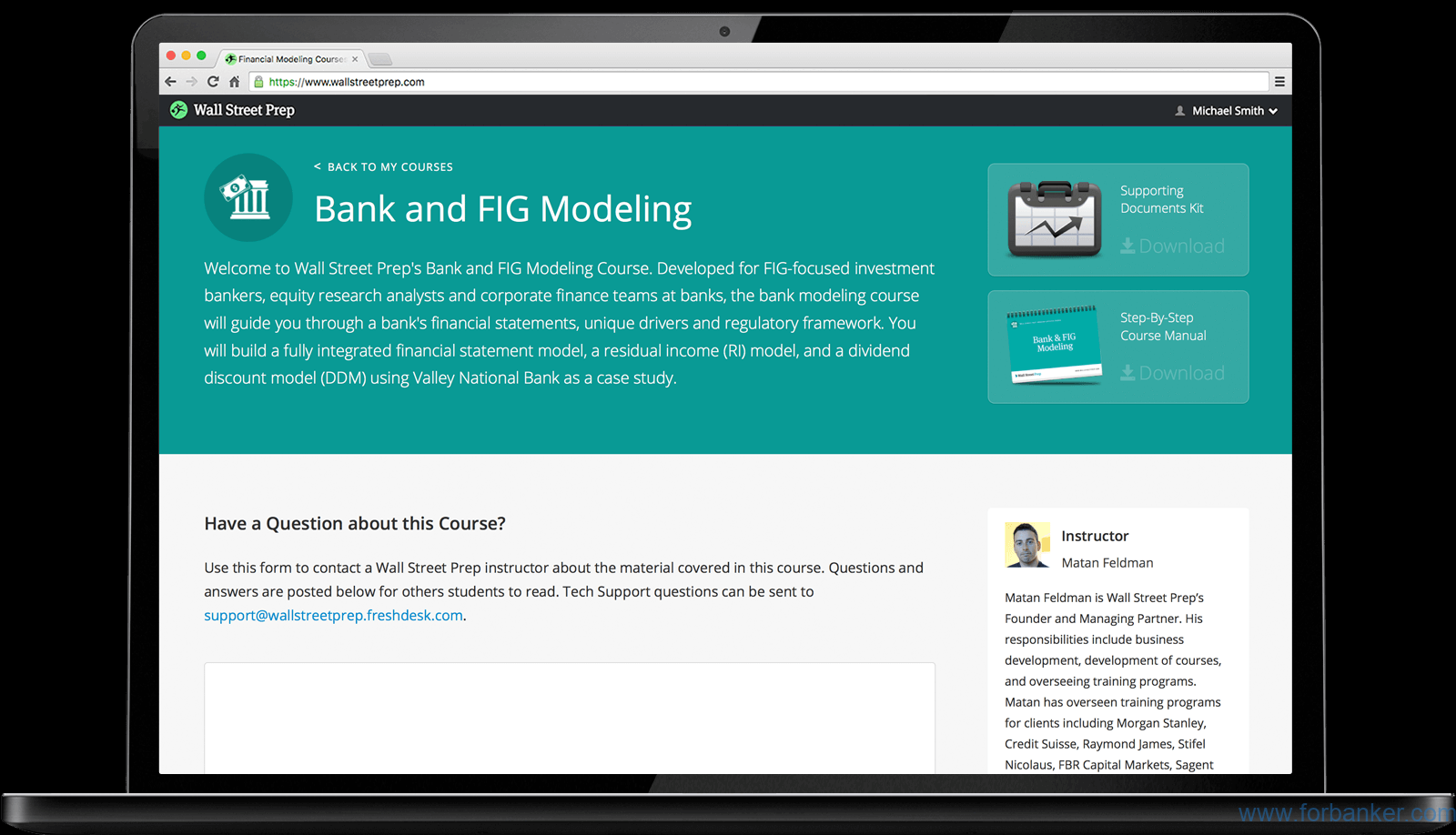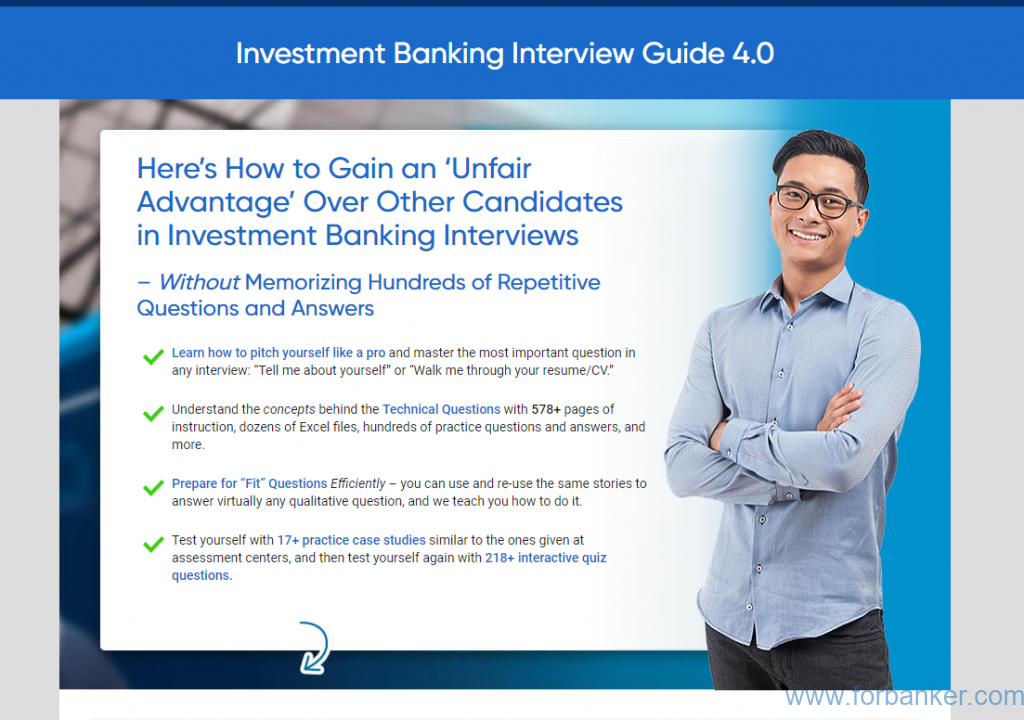Bank & FIG Modeling(Wall Street Prep) 内容介绍
课程介绍
Developed for FIG-focused investment bankers, equity research analysts and corporate finance teams at banks, this course guides trainees through a bank’s financial statements, unique drivers, and regulatory framework. Please note, this course is sold as a hard-copy manual with a corresponding PDF (shown below) and no video component.
学习目的
The analysis of banks is different from that of most other types of industries. As a result, analysis requires adjustments and different approaches from traditional valuation methodologies. Wall Street Prep’s bank modeling course will guide you step-by-step through a bank’s financial statements, unique drivers and regulatory framework. You will build a fully integrated financial statement model, a residual income (RI) model, and a dividend discount model (DDM) using Valley National Bank as a case study.
银行的分析与大多数其他类型的行业不同。因此,分析需要调整和不同于传统估值方法的方法。华尔街预科的银行建模课程将引导您逐步了解银行的财务报表、独特的驱动因素和监管框架。您将以Valley National Bank为案例,建立一个完全整合的财务报表模型、剩余收入(RI)模型和股息贴现模型(DDM)。
能学到什么
Section One: Building a bank forecast model
- Build an advanced bank forecast model, projecting asset and liability balances, interest rates and spreads for key assets and liabilities, using industry best practices
- Learn to effectively forecast the loan portfolio, investment securities, and deposits
- Understand the modeling and forecasting of allowances for loan losses and net charge offs (NCOs)
- Model regulatory constraints and analyze effects on leverage, capital ratios, and profitability
- Forecast net interest income (NII), asset yields, funding costs and interest earning assets (IEA) and liabilities (IBL) using an approach that takes into account typical disclosure gaps, is internally consistent, and avoids common modeling pitfalls
- Learn common forecast approaches for the non-interest income and expenses such as fees, and compensation
- Identify the most appropriate “plugs” in a bank model to ensure the model balances, and address circular reference issues in the model
Section Two: Building a bank valuation model
- Using the results derived from the forecast model, build a residual (excess returns) income model
- Build an adjusted dividend discount model using the prevailing beset practices for banks (not the same as non-banks)
- Analyze how regulatory capital constraints effect valuation
- Develop assumptions about return on equity (ROE), risk weight assets (RWA), cost of equity, and minimal capital ratio that are internally consistent for a multiple stage model
- Compare the other valuation approaches such as comps and DCF and identify strengths and limitations of each approach
购买
原链接(Purchase Link)
www.wallstreetprep.com/self-study-programs/bank-and-fig-modeling/

福贝壳儿 » Bank & FIG Modeling(Wall Street Prep) 内容介绍






